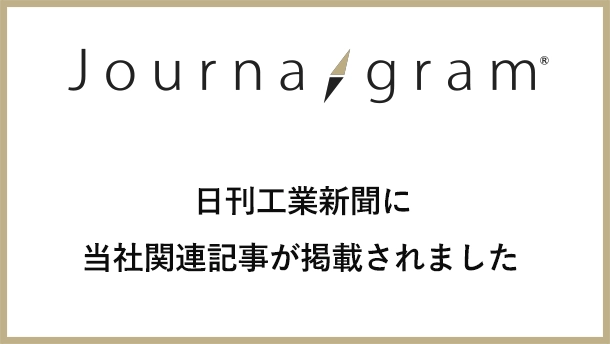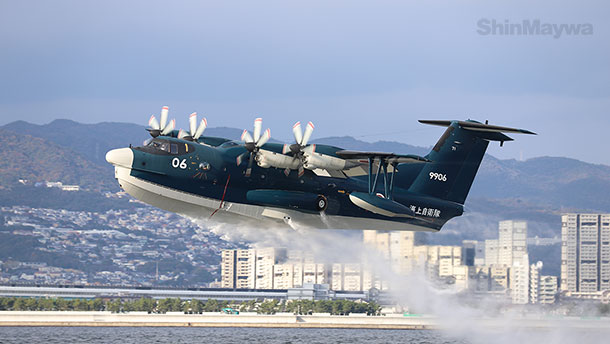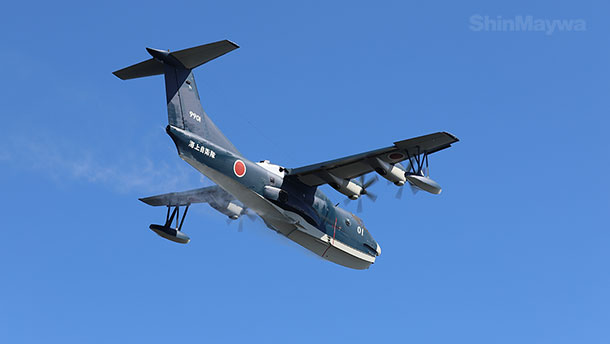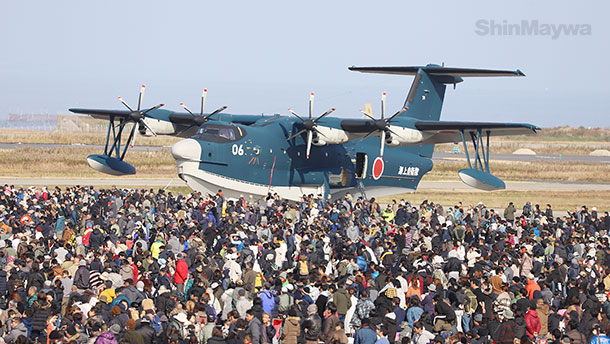[Series] How the US-2 is made (8)
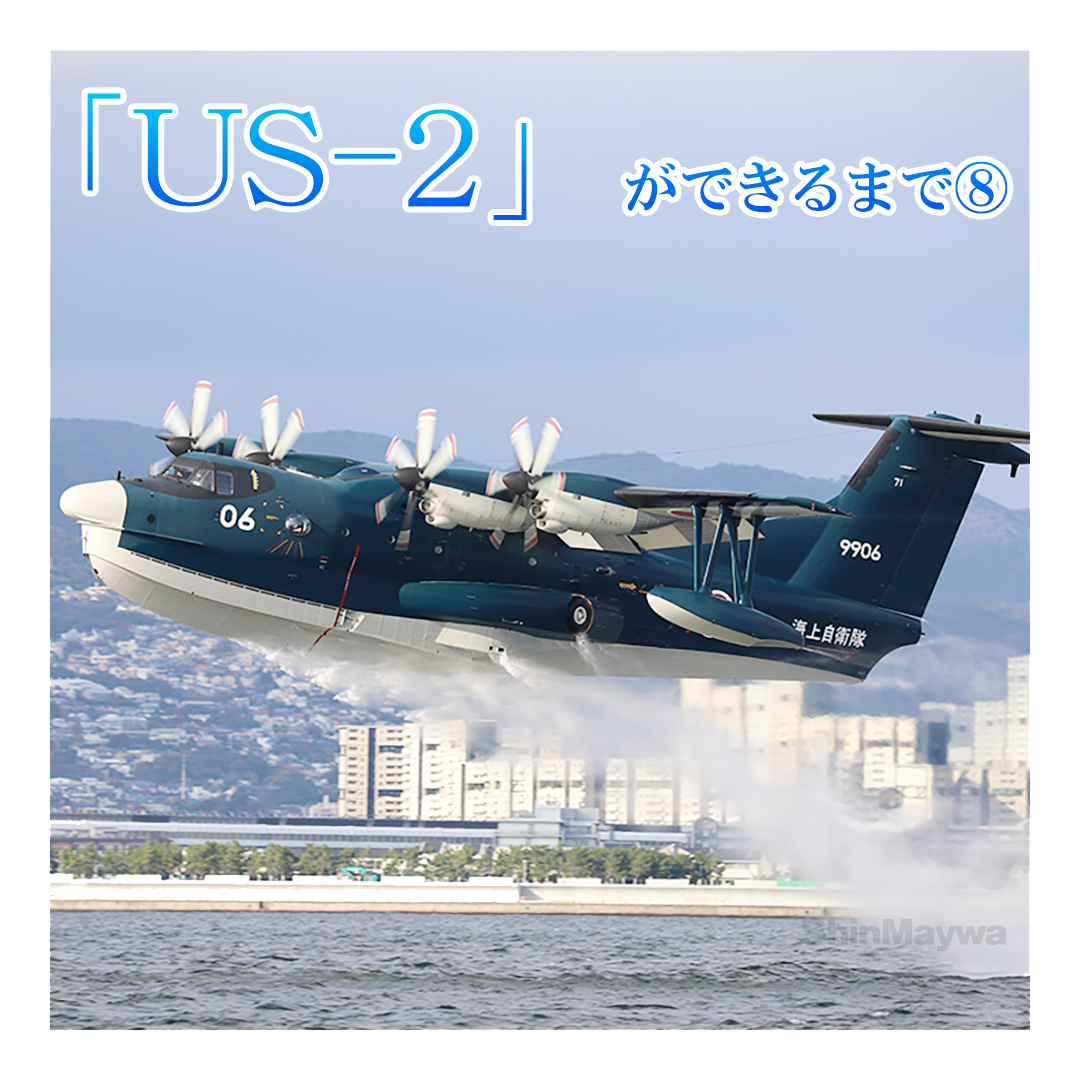
Close coverage by a professional writer
Attach the main wing to the fuselage,
Finally, it looks like an airplane!
Last time, we talked about the process of "unloading the jig", where the fuselage from the nose to the stern is completed by joining the various parts of the fuselage made using the "block construction method", and then lifting the entire fuselage with a crane and removing it from the jig. did.
This time, we will introduce the process of attaching large parts such as the main wings to the fuselage.
Flying boats from all over the world have their engines and propellers located high up to avoid damage from seawater spray when they take off and land on water.
The "US-2" is similar, with a "high-wing arrangement*" in which the main wings rest on the fuselage.
This means that the fuselage hangs from the wings during flight.
For aircraft with a low-wing configuration, the main wing attachment parts are also made during the fuselage manufacturing stage, but in the case of the high-wing configuration US-2, the main wings are placed on top of the completed fuselage and firmly fixed. Then, the difference between the fuselage and the main wings is smoothed out with a cover called a "fairing."
The main wing is also made using the block construction method, which is divided into three main parts.
There is a "standard wing'' that is fixed to the fuselage, and "outer wings'' on the left and right sides that connect to the standard wing. Both are lifted by a crane, aligned and fixed with bolts and rivets.
In order to join large, heavy blocks at a high location, special scaffolding is erected, and workers carefully determine their positions. Therefore, one day is spent each on joining the standard wing, left outer wing, and right outer wing.
*The "high-wing arrangement" is the mainstream arrangement not only for Amphibian aircraft but also for transport aircraft, whose fuselage is designed in a low position to make it easier to load and unload cargo at airports. On the other hand, many passenger aircraft have a "low-wing configuration,'' in which the engine and fuselage are placed as far away as possible to suppress noise transmitted into the cabin. In addition, in the case of "US-2", the fuselage itself is also designed vertically, and from this you can see the intention of the development team to position the engine as high as possible.
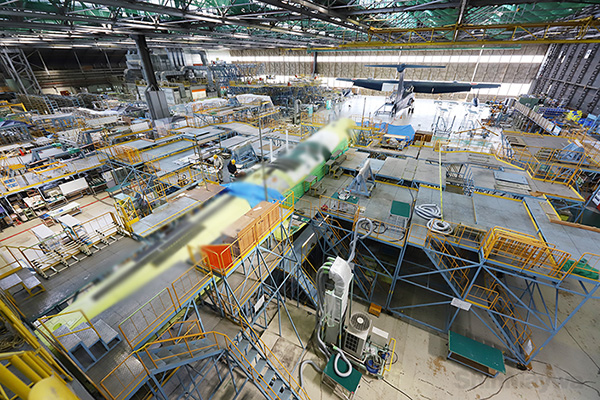 (1) Surrounded by scaffoldingUS-2 body. At the topfourthe main wing is fixed to the white pillar of the book.
(1) Surrounded by scaffoldingUS-2 body. At the topfourthe main wing is fixed to the white pillar of the book.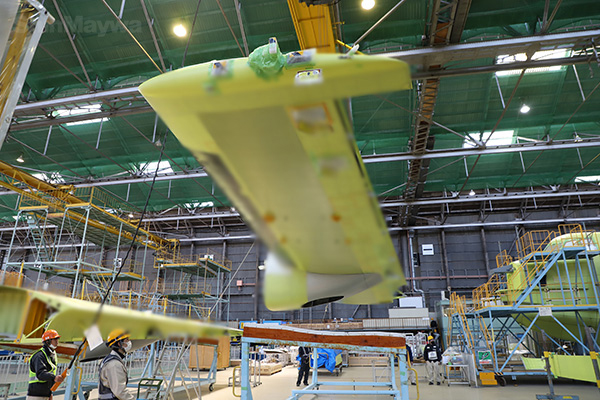 (2) Started installing the left main wing (this is called the "outer wing" compared to the "standard wing" at the base).
(2) Started installing the left main wing (this is called the "outer wing" compared to the "standard wing" at the base).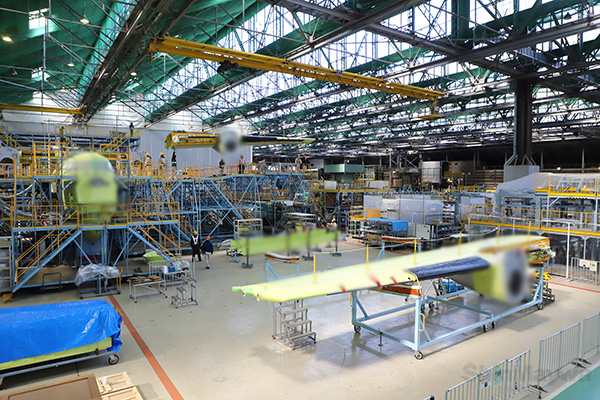 (3) There is a crane on the ceiling of the plant, which allows for efficient work. The right wing is also placed in the foreground.
(3) There is a crane on the ceiling of the plant, which allows for efficient work. The right wing is also placed in the foreground.
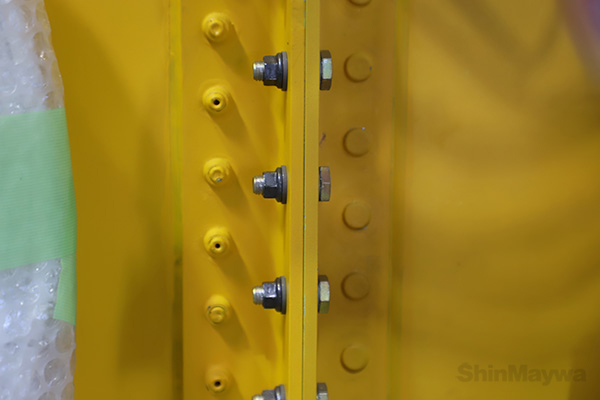 (4) After aligning it perfectly, temporarily fasten it with bolts. This is the front of the main wing.
(4) After aligning it perfectly, temporarily fasten it with bolts. This is the front of the main wing.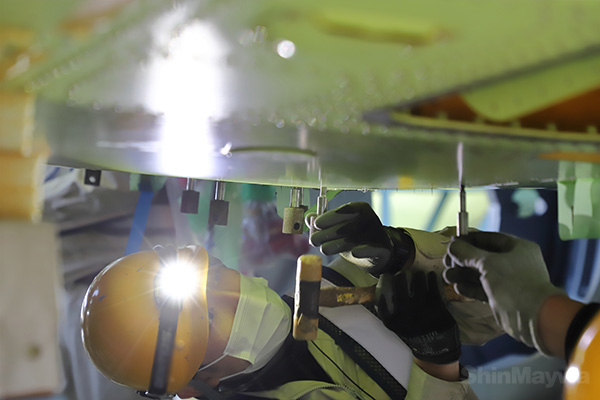 (5) This shows a temporary fixing pin being inserted into the underside of the main wing. The pin will not fit in unless the precision of the work is high.
(5) This shows a temporary fixing pin being inserted into the underside of the main wing. The pin will not fit in unless the precision of the work is high.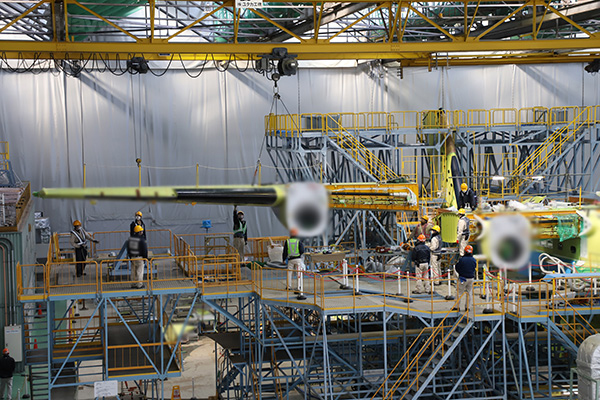 (6) This is the installation of the right outer wing. You can see that there are strict procedures for things like the shape of the scaffolding and the placement of workers.
(6) This is the installation of the right outer wing. You can see that there are strict procedures for things like the shape of the scaffolding and the placement of workers.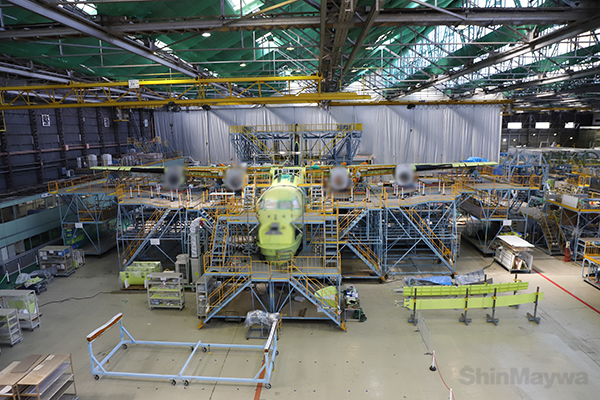 (7) Once the main wings are attached, it instantly looks like an airplane. Attach the vertical stabilizer, horizontal stabilizer, etc. in the same way.
(7) Once the main wings are attached, it instantly looks like an airplane. Attach the vertical stabilizer, horizontal stabilizer, etc. in the same way.
Writer Hidenori Itakura
-


